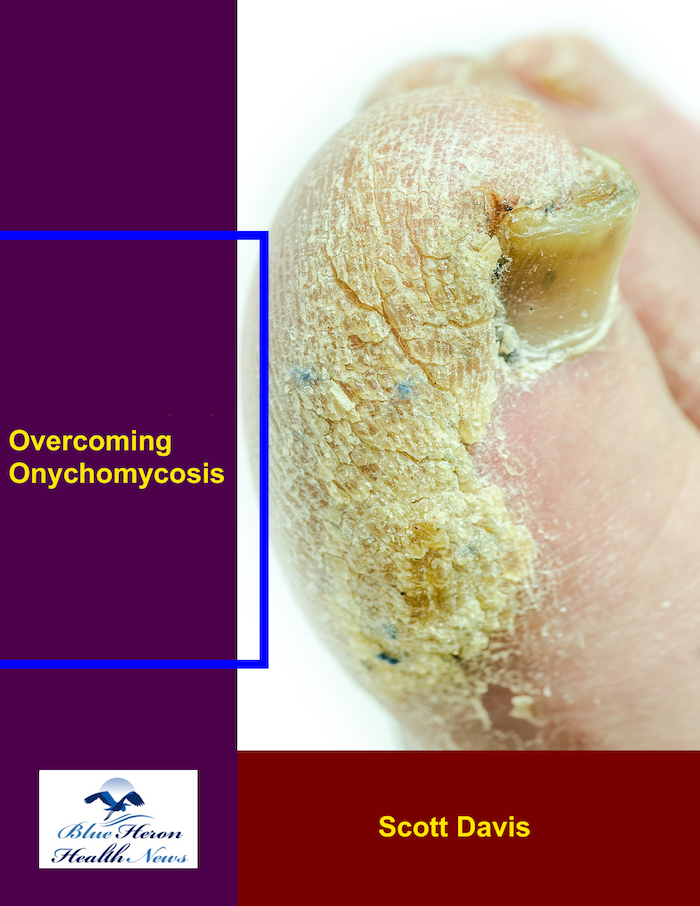
Overcoming Onychomycosis™ By Scott Davis If you want a natural and proven solution for onychomycosis, you should not look beyond Overcoming Onychomycosis. It is easy to follow and safe as well. You will not have to take drugs and chemicals. Yes, you will have to choose healthy foods to treat your nail fungus. You can notice the difference within a few days. Gradually, your nails will look and feel different. Also, you will not experience the same condition again!
How is onychomycosis differentiated from other nail disorders?
Differentiating Onychomycosis from Other Nail Disorders
Onychomycosis (fungal nail infection) can mimic other nail disorders, making accurate diagnosis essential for proper treatment. To distinguish onychomycosis from other nail conditions, doctors use a combination of clinical examination, laboratory tests, and microscopic analysis.
Below is a detailed comparison of onychomycosis with other common nail disorders:
1. Clinical Differences: Onychomycosis vs. Other Nail Disorders
| Nail Disorder | Clinical Features | Key Differentiating Factors |
|---|---|---|
| Onychomycosis | Thickened, discolored nails (yellow, brown, or white), brittle or crumbly texture, possible separation from the nail bed (onycholysis). | Often starts at the free edge of the nail and spreads inward. Fungal elements confirmed by lab tests. |
| Psoriasis (Nail Psoriasis) | Pitting (small depressions in the nail), oil drop discoloration, thickening, and possible nail lifting (onycholysis). | Presence of skin psoriasis, no fungal hyphae in lab tests. Pitting is absent in fungal infections. |
| Trauma-Induced Nail Damage | Nail discoloration (white or dark spots), thickening, and possible detachment. | History of injury or repeated pressure. Lacks fungal elements on microscopic examination. |
| Lichen Planus | Ridges on nails, splitting, thinning, and discoloration. | No fungal hyphae in lab tests. Usually affects multiple nails symmetrically. |
| Eczema or Contact Dermatitis | Nail brittleness, ridging, and inflammation around the nail fold. | Associated with itchy, inflamed skin. No fungal elements on lab tests. |
| Paronychia (Bacterial Infection) | Red, swollen, painful nail folds, often with pus. | Rapid onset, associated with pain and swelling, whereas onychomycosis is slow-progressing and usually painless. |
| Aging-Related Nail Changes | Yellowing, thickening, and ridges. | Evenly affects all nails without fungal elements. |
2. Diagnostic Tools to Differentiate Onychomycosis
Since clinical appearance alone isn’t enough, doctors use laboratory tests to confirm a fungal infection and rule out other conditions.
A. Microscopic Examination (KOH Test)
- A potassium hydroxide (KOH) preparation dissolves keratin and allows fungal hyphae to be seen under a microscope.
- Positive in onychomycosis: Fungal hyphae or spores are present.
- Negative in psoriasis, eczema, trauma (no fungal elements).
B. Fungal Culture
- Nail clippings are cultured to identify the specific fungus causing the infection.
- Useful for differentiating onychomycosis from non-fungal nail disorders.
C. Nail Biopsy
- If the cause remains unclear, a histopathological examination of nail tissue may be done.
- Helps differentiate onychomycosis from psoriasis or lichen planus.
D. Wood’s Lamp Examination
- Some fungal species (e.g., Microsporum) fluoresce under ultraviolet (UV) light.
- Not always conclusive, as many common onychomycosis-causing fungi do not fluoresce.
3. Key Differentiating Clues
- Itching, scaling, and fungal infections elsewhere (athlete’s foot) → Suggest onychomycosis.
- Pitting, oil drop discoloration, associated skin psoriasis → Suggest nail psoriasis.
- Rapid swelling, pain, pus formation → Suggests bacterial paronychia.
- Symmetric involvement of all nails, ridging, and splitting → Suggests lichen planus.
Conclusion
Onychomycosis can be differentiated from other nail disorders through clinical signs, microscopic tests (KOH prep), fungal culture, and biopsy. Since misdiagnosis can lead to ineffective treatments, a laboratory confirmation is crucial before starting antifungal therapy.
Would you like details on treatment options for onychomycosis or home care strategies to prevent nail infections?
Overcoming Onychomycosis™ By Scott Davis If you want a natural and proven solution for onychomycosis, you should not look beyond Overcoming Onychomycosis. It is easy to follow and safe as well. You will not have to take drugs and chemicals. Yes, you will have to choose healthy foods to treat your nail fungus. You can notice the difference within a few days. Gradually, your nails will look and feel different. Also, you will not experience the same condition again!